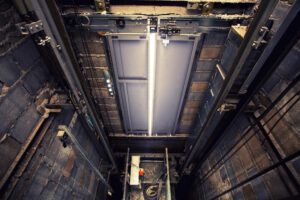 During 2021, the growth of the IoT market has stimulated the creation of new formulas for the application of this technology. Moreover, according to some analysts’ projections, the market could grow to as much as 11 trillion USD by the year 2025. To give you an idea, this figure is roughly equivalent to the combined GDP of Germany, Japan and France.
During 2021, the growth of the IoT market has stimulated the creation of new formulas for the application of this technology. Moreover, according to some analysts’ projections, the market could grow to as much as 11 trillion USD by the year 2025. To give you an idea, this figure is roughly equivalent to the combined GDP of Germany, Japan and France.
For manufacturers, the constantly-evolving IoT space is an opportunity to make money from their innovation efforts by providing solutions to today’s challenges, such as the application of IoT in predictive elevator maintenance, while fundamentally solving the problem of cost efficiency, real-time data processing and analytics.
From reactive maintenance to a predictive model
The concentration of the population in urban centers and efficient mobility in these areas is having a positive effect on the whole elevator installed base and on the way elevator manufacturers and maintenance companies direct their maintenance efforts towards improving quality of service for customers.
Preventative maintenance has traditionally involved setting schedules and review dates based on statistical models on the number of hours of elevator usage and estimates on fault detection and useful life. The problem with this kind of maintenance is that it lacks 24×7 real-time condition monitoring. This leads to the following difficulties:
- Increased elevator downtime.
- Increased travel costs for service technicians
- Lower client company satisfaction (which in turn affects the end user)
The predictive maintenance of elevators with IoT technology: characteristics
Predictive maintenance introduces machine learning models (automatic learning) and other components of AI, which in this use case may include:
- Edge sensor, responsible for gathering, analyzing, and sending acceleration data on the elevator’s main activities, route, and hours of usage.
- Platform that anticipates and reacts to accumulated historical data, conducting scheduled maintenance on artificial intelligence.
The AI-powered edge computing environment is designed to reduce power consumption, bandwidth and response times by moving data processing closer to the data source (before traveling to the cloud) in a decentralized way at the network boundary. That is, organizations can receive and analyze processed data in real time, improving base telemetry monitoring, positioning and fault detection.
Consequently, the low-latency data processing dramatically improves companies’ internal processes and work capacity:
- Having visibility of the park allows manufacturers and service companies to slash their OPEX costs and reduce elevator downtime.
- It adds value in customer service by, for example, installing system updates remotely or via mobile by technicians, sending alerts and designing new predictive models thanks to historical data from intuitive APIs, etc.
Figure1: Four steps to a Predictive Maintenance
In the future, we can expect this intelligent industry segment to move towards improving techniques for the exploitation of source-generated data that add value to the IoT ecosystem of projects they deploy or have on the roadmap for future implementation.
Teldat’s IoT product and innovation teams work tirelessly in the research, design and launch of innovative market solutions that meet customers’ real needs, with high technological requirements to optimize their operational costs and thereby obtain a short-term return on investments (ROI) in their income statement.


























